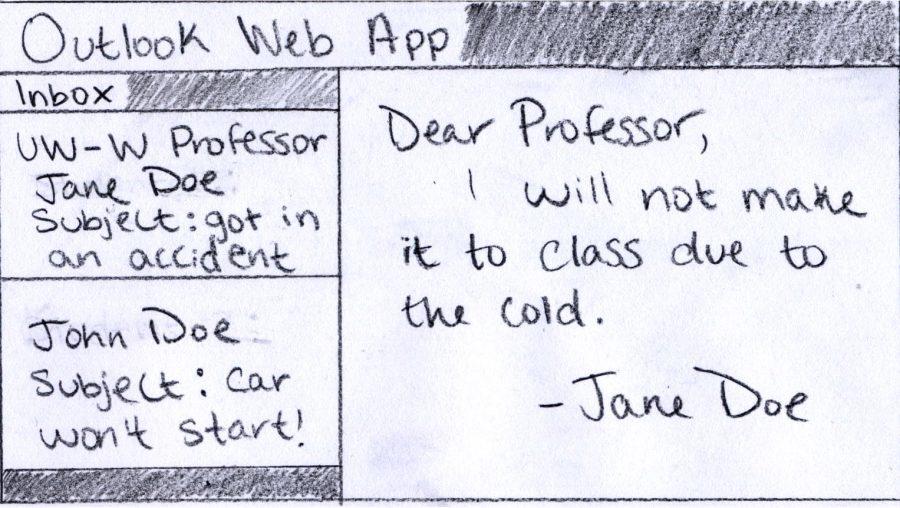Feb. 12, 2014
Editorial Staff Opinion
A university has a few distinct goals – the main one being to educate its students and prepare them for the professional world. Another objective that should be high on the list is protecting students and employees.
One option to achieve safety for the campus community is to close in times of extreme weather.
The most recent example of UW-Whitewater remaining open during inclement weather was Jan. 27 and 28. During those days, the wind chills dropped to as low as 40 degrees below zero in southern Wisconsin.
At 39 degrees below zero with wind chills, frostbite will occur on any exposed skin within 10 minutes, according to the information from the Colorado Academy of Family Physicians.
A percentage of UW-Whitewater students are more than a 10-minute walk to class. The best option to protect these students in this case would have been to close campus or delay opening, following the lead of sister campuses UW-Milwaukee and UW-Madison.
Students wonder: the people who decide whether to close campus, how far do they walk on a daily basis around campus? How heavy are their backpacks?
Closing campus would have kept UW-Whitewater employees from enduring harsh weather and risking their safety as well.
Another group to consider when reviewing safety is commuters, who make up a significant part of the UW-Whitewater student body. With temperatures as low as 40 degrees below zero, roads quickly become frozen. This creates dangerous driving conditions, not to mention the dangers posed by sitting in a car in the cold in the event of an accident. Some students cannot even get their cars started and end up missing class.
When the weather gets to be this extreme, many professors choose to cancel their classes anyway to avoid these problems. Considering this, the question of whether it is even worth remaining open needs to be asked.
Many students received e-mails explaining if they did not feel safe, to not attend class. But this raises another question: is this statement sufficient to truly ensure no students will be hurt?
K-12 public school systems, fortunately, are able to plan in more days to make up for lost learning time. Colleges and universities are not afforded this option, but technological tools should allow contingency plans: classes can meet on group Skype, a Google hangout, or D2L chat as a reasonable substitution.
In the event UW-Whitewater chooses to stay open during inclement weather, more steps should be taken to ensure student safety.
For example, during another bitterly cold day on Jan. 5, the UW-Milwaukee student
radio station released a list of area warming stations for students to stop in and warm up.
According to the University of Wyoming’s website, during a snowy stretch of days in December, the university offered students free transportation to classes.
At the very least, the university could disseminate information on how to handle the extreme cold much more efficiently. Other UW system campuses post whether they are open on their homepage, and direct students to information on how to survive the cold, places to obtain discount clothing or food, and in case of power outages at university housing, places for emergency shelter.
With more students than ever on social media, it would be expedient for the university to tweet or post about this information online. It could use social media to provide an easily accessible answer to whether the campus school was open.
During Jan. 27 and 28, there only was one post combined on the university’s Facebook and Twitter accounts. This post was directed at a single user, so it was not visible for all followers.
If the university hopes to further ensure the health and safety of its students, issues of weather will have to be handled more effectively and more judiciously in the future.


